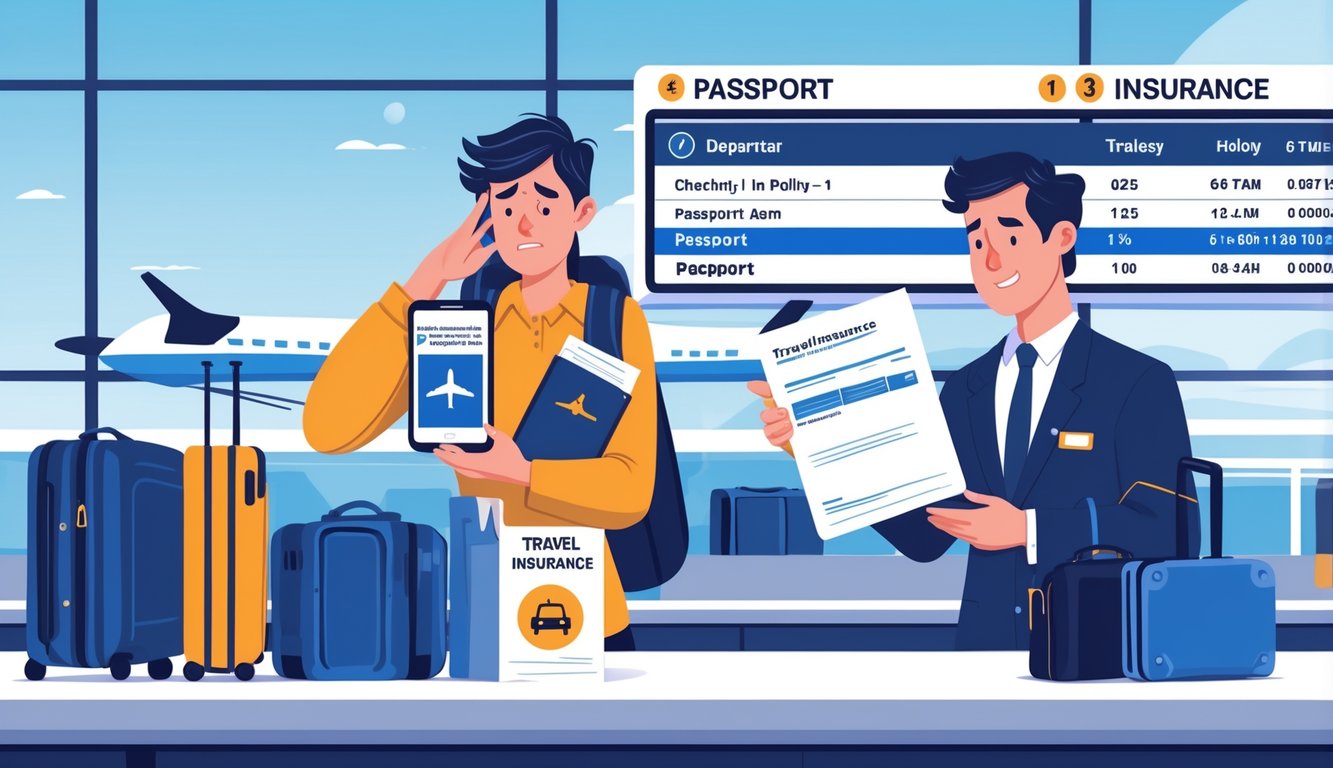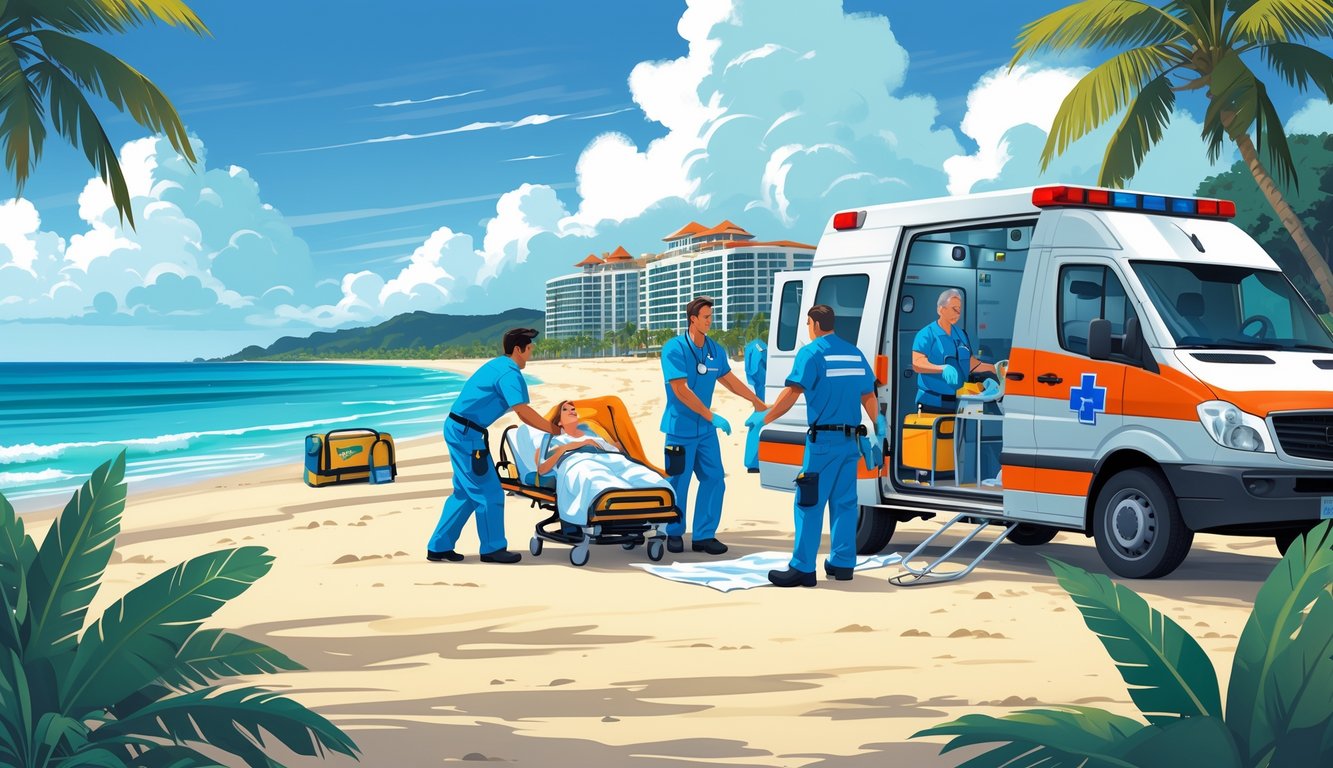
Medical Emergencies and Evacuation Coverage

Why do people keep assuming their U.S. insurance will work in Amsterdam? Every year, thousands get stuck with bills that would make you cry, all because they skipped a $30 add-on. Travel insurance would’ve solved everything, but, you know, nobody wants to read the fine print.
Emergency Medical Benefits
Imagine this: you break out in a rash on the Paris Metro. You can’t even read the pharmacy signs, your wallet’s empty, and you’re frantically Googling “urgent care near me.” Hospital bills, X-rays, prescriptions—these should be the first thing you check in a policy, but most people just skip to the price.
A 2023 Allianz survey said 22% of Americans think their normal health insurance covers them abroad. My brother thought so, too—until he got a $670 ambulance bill in Prague. And that’s just the start. Lab work, follow-ups? You’ll blow through your deductible in a night. Decent travel insurance spells out what’s covered, with a cap—maybe $50,000, maybe $250,000. Miss the paperwork or don’t call them fast enough? Good luck. No claim for you. AXA’s medical benefits page breaks it down, but nobody reads it until it’s too late.
Medical Evacuation Coverage Explained
Here’s what’s wild: people never check how “evacuation” actually works. Break your ankle in Nepal, snowstorm raging, agent vanished. Emergency teams arrange transport, sometimes an air ambulance, and they know what “nearest appropriate medical facility” means (CDC travel health guidance is surprisingly blunt).
A medevac can cost over $100,000 if you need to cross borders. Travelex says evacuation coverage reimburses you, but only if you call them first. Book your own helicopter? They’ll just laugh (Travelex evacuation coverage). Some plans even toss in repatriation of remains or let a companion travel with you, but it’s never clear. My old boss got stranded in Quito—don’t expect your embassy to bail you out, ever.
International Trip Medical Plans
Feels weird to call insurance a “trip essential,” like socks or toothpaste, but try arguing with a $200 pharmacy bill in Tokyo when your HMO shrugs. International medical plans are like a build-your-own sandwich—emergency medical, evacuation, and 24/7 help, all stacked together. Most are written in legalese, but if you stick to Allianz (emergency medical travel insurance), at least you’ll recognize the basics: out-of-pocket care, upfront payments, and someone who speaks English.
One thing I picked up writing for a travel mag: compare not just coverage limits, but how you file claims. Some want pre-authorization—miss that, and even legit bills get denied. Frequent travelers can sometimes get annual plans, but those might cap coverage per incident, not per year. That’s a joke if you end up in urgent care twice in a month. Annual plans can be cheaper, but always check for pre-existing condition exclusions. They’re buried deep.
Pre-Existing Conditions and Coverage Limitations

People treat travel insurance like a checkbox—click, done, problem solved. But it’s pre-existing conditions and the fine print that trip up everyone. I’ve watched friends fly off, thinking allergies or diabetes are covered, and then—surprise!—massive bills.
Pre-Existing Condition Coverage
Those “waivers” sound great, but if I don’t handle it within, what, 14 days of my deposit (AXA Platinum Plan), I might as well not bother. My friend Dave, with his heart stuff, didn’t check what “stable” meant. Claim denied. The bill nearly gave him another heart attack.
Insurers want all pre-existing conditions “stable”—their word, not mine—before they’ll cover anything. “Stable” means no med changes, no new symptoms, nothing for three to six months (or whatever their definition is, which changes every time I look). You only get coverage if you buy within their window. Miss it, and the door slams shut.
Some plans toss in coverage for common stuff, but then exclude pregnancy or mental health. You’d think insurance is a yes/no question, but nope—it’s a maze of exceptions and tiny print.
Exclusions for Pre-Existing Medical Conditions
Honestly, exclusions are everywhere. I can’t believe how they sneak into the smallest print—like, if I so much as adjusted a prescription in the last few months, forget it, that’s not covered. Even with big names like Allianz, you’re out of luck for mental health stuff or a routine pregnancy. Doesn’t matter if you’re on the fancy plan or the bargain one.
That Portugal trip—my neighbor’s kid, diabetic, didn’t check for pre-existing coverage, and when he needed insulin, the insurer just shrugged. Why? Because his prescription had changed recently. You can’t just tick a box and get covered; they want every scrap of paperwork, extra fees, and then you’ve got to prove nothing’s changed since your last checkup. “Limitations” is their favorite word, and it’s so vague it could mean anything.
I’ve read so many policies my eyes hurt, and the exclusions just keep growing, especially when you actually need help. Anything about symptoms coming back or “expected complications”? They’ll toss your claim in the bin. Doesn’t matter if you spent extra for the platinum plan—miss a deadline, or misunderstand one weird clause, and your claim’s just a stack of useless paper.
And it’s not just me. Every travel insurance FAQ blasts a big warning about this. I get it, they want plausible deniability, but when I’m sick in Rome and they deny my claim, that’s zero comfort.



